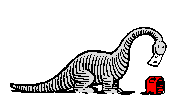 Sign my Guestbook,
View my Guestbook
Sign my Guestbook,
View my Guestbook
 Sign my Guestbook,
View my Guestbook
Sign my Guestbook,
View my Guestbook
| 1- 10 trees with open flowers or ripe fruit | 11- 50 trees with open flowers or ripe fruit | more than 50 trees with open flowers or ripe fruit | |
| Trees native to the area | 1a | 2a | 3a |
| Planted trees | 1b | 2b | 3b |